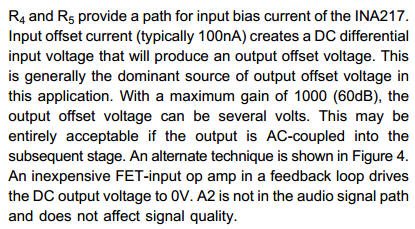Dear,
I want to amplify signal for Shure 514B microphone placed 40 meters from amplifier. I'm going to use INA217 and DRV 134 but I don't sure if my design is correct. I don't need phantom power.
I have some doubts, my microphone is dynamic with 150ohm, Is INA217 input FET or Bipolar? Do I have to put capacitor between INA217 and DRV134? Is necessary a capacitor at each INA217 input?
Please, Can anybody help me?
Best Regards
SAMUEL



